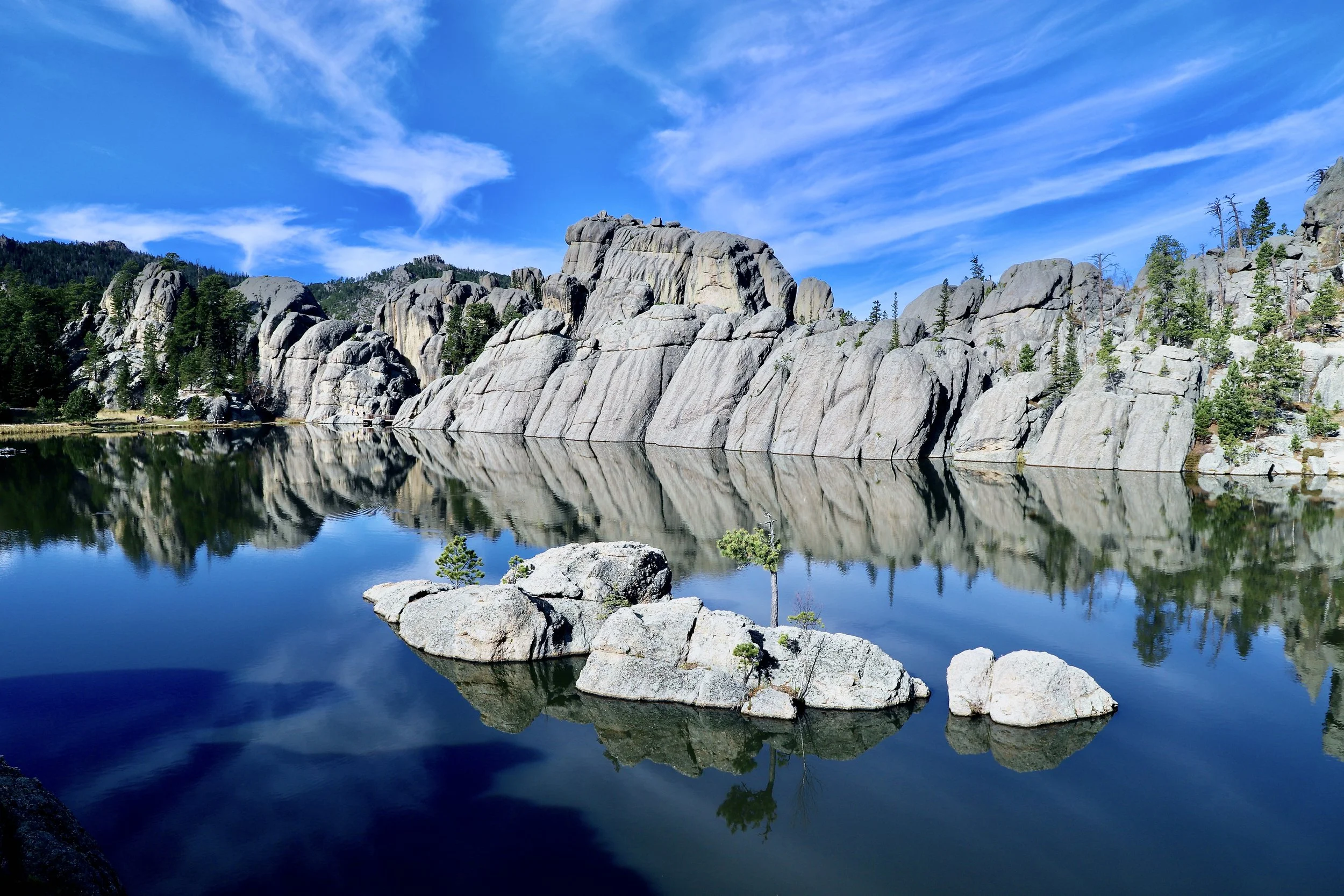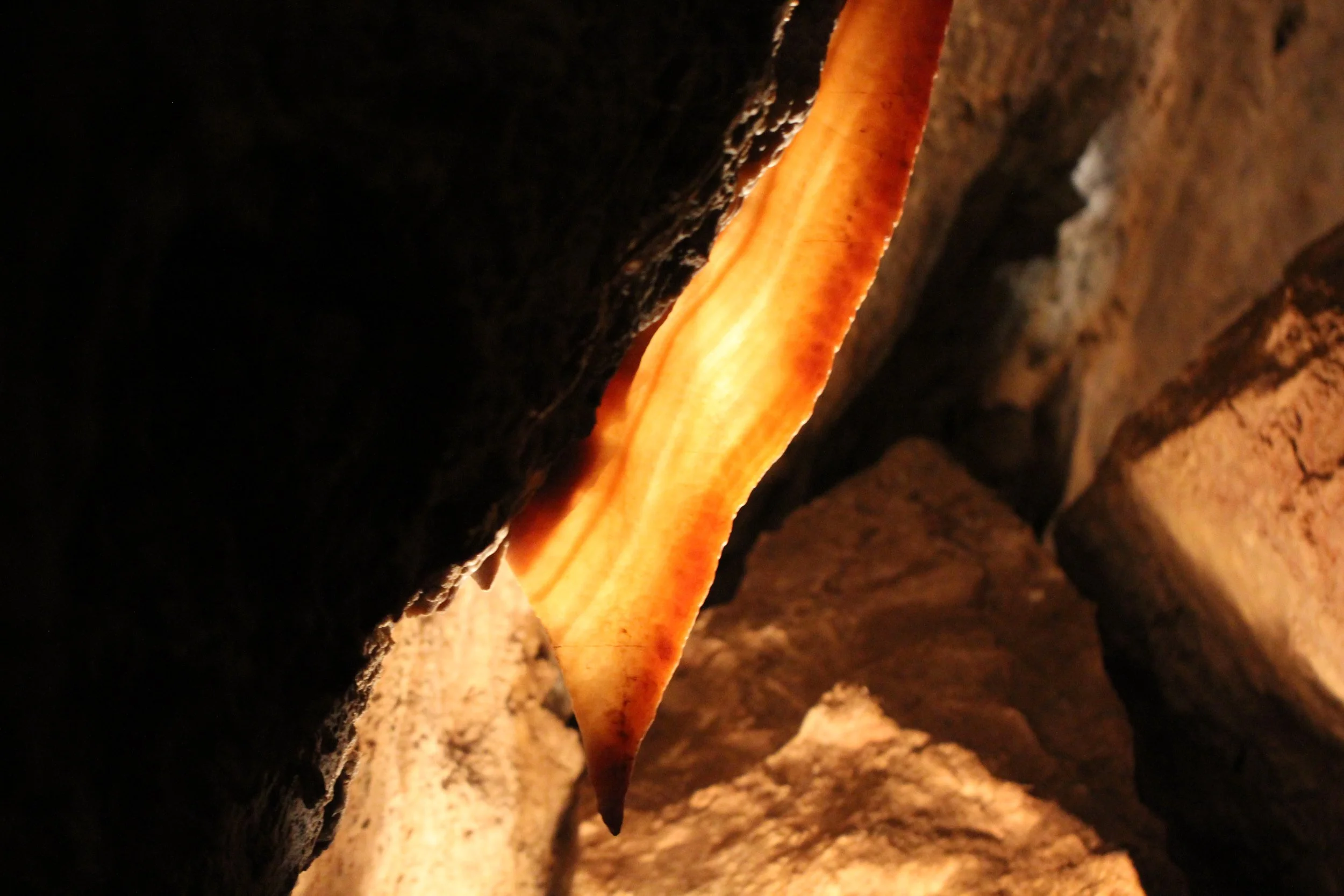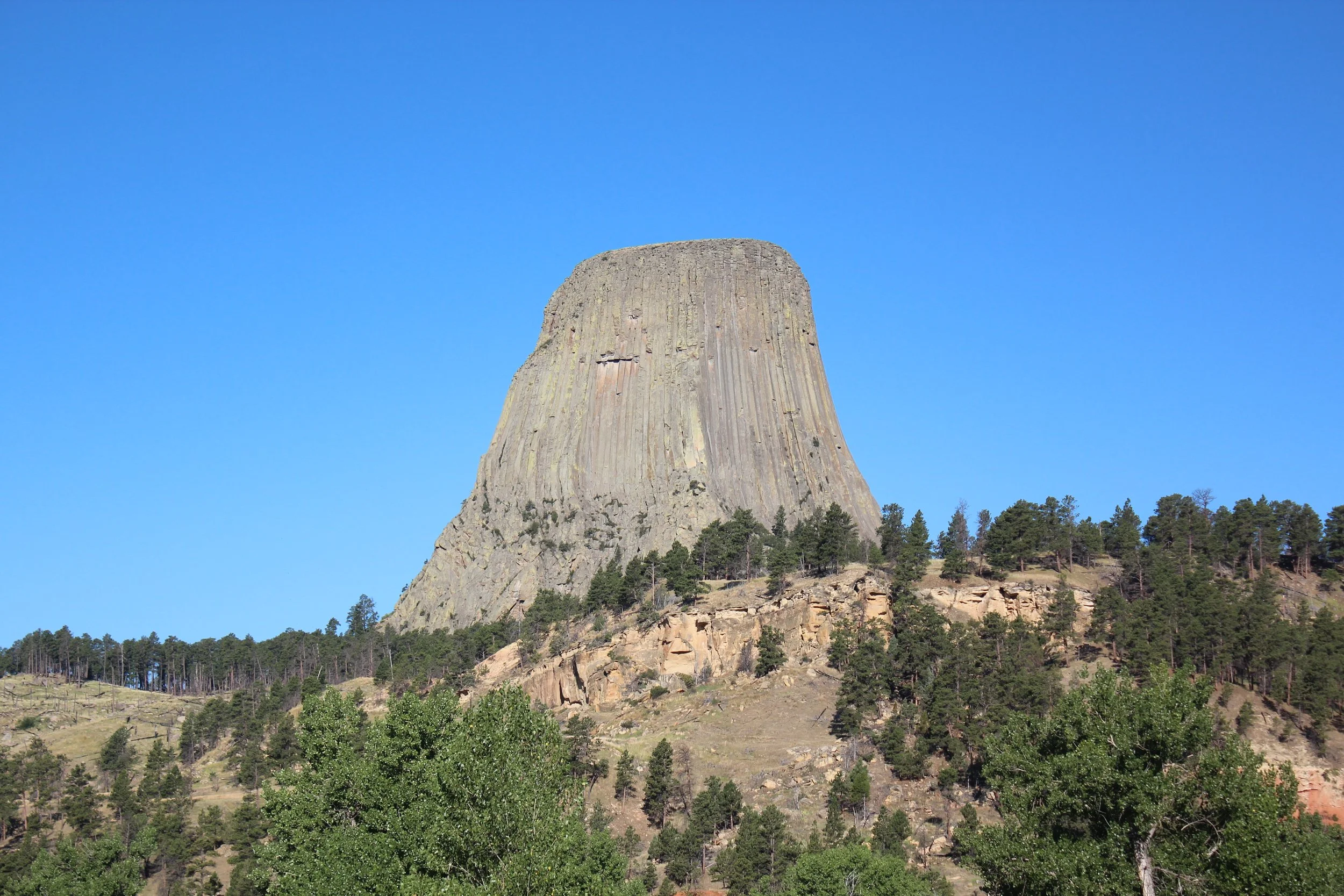I have a tattoo of a seahorse on my right leg. The seahorse is a vulnerable creature. It’s the slowest of all fish due to having only one small fluttering fin on its back. Its defenses are camouflage, having a tail that it can use as an anchor to avoid being swept away in the current, and being a very bony and difficult to eat fish. The males have a territory that is only 11 square feet within a coral reef or nearby grass bed. Their survival is dependent on the health of the coral reef, which they have no control over. The seahorse has no voice, but my tattoo reminds me that if I care about these creatures, I need to speak up on their behalf - to teach others about the health of our planet’s coral reefs so that those people teach more people and so on, with the hope of encouraging action big enough to make an impact. The health of our coral reefs is entirely dependent on human action. We impact nature in both negative and positive ways. We need to focus on how improving the positive impacts.
The pictures in this post are all from coral reefs outside Negril, Jamaica, where my husband and I love to go scuba diving. This post however is inclusive to coral reefs worldwide.
Current Fate of World-Wide Coral Reefs
Coral reefs are the most threatened ecosystem on our planet. Although they cover less than 0.1% of the ocean floor, coral reefs are home to over 25% of all saltwater fish species and other marine animals. These two facts side-by-side are chilling. Losing the coral reefs would translate into a major extinction. Coral reefs are dying due to “bleaching” events caused by increases in ocean temperature, resulting from climate change and global warming – directly impacted by our human-caused increases in greenhouse gas emissions. The bleaching events of the Great Barrier Reef in 2016 and 2017 killed approximately 50% of its corals. We have to raise awareness about reducing emissions today, or we risk losing our reefs forever.
What is a Coral Reef and How does it Form?
Coral is in the same animal group as the jellyfish and sea anemones. These animals are distinguished by having simple stomachs and a mouth surrounded by stinging tentacles. The individual coral animal is called a polyp. Polyps have a soft body and remove calcium from seawater to form a hard, protective limestone skeleton at their base. This skeleton will form the structure of a coral reef.
A reef begins when a polyp, floating in the sea, attaches to a rock or other hard surface (sunken boat, plane, etc.). The polyp then divides, or buds, and creates thousands of itself over hundreds and thousands of years. The limestone skeleton of these polyps grows into a large structure. As this colony of polyps joins other colonies, the structures grow into reefs. As the coral polyps die, they leave behind their skeleton structure. The end result is reef made of living and dead coral. Some of today’s coral reefs began growing over 50 million years ago. Coral reefs are the largest living structures on our planet, and are so big, some are even visible from space.
What is Corals Relationship with Algae?
Coral reefs depend on symbiotic relationships – a relationship that forms between two species where both benefit from and depend upon one another for survival. This is a hard concept for humans – we like to think we alone are in control and that we do not depend on other organisms for our survival. Of course, this is not true. We very much depend on plants and animals for food, clean air, and clean water, in addition to the more directly linked bacteria that live within us.
Corals live and grow in nutrient poor water, and they need help in order to survive in this environment. The only time a coral polyp lives alone is in its larva stage. For the remainder of the coral’s life, it is joined with a single-celled algae plant, called zooxanthellae. This algae grows inside the tissue of each polyp. Through photosynthesis, the algae converts light energy into the majority of nutrients needed by the coral. In return, the coral emits ammonium, which is required by the algae. The close proximity of the coral and algae keeps the necessary nutrients for each organism nearby, preventing them from drifting away in the ocean’s current. The algae is also responsible for providing the bright colors of coral. Without this algae, the coral is white.
What is Coral Bleaching?
Coral bleaching refers to coral that has turned white. Coral is sensitive to ocean temperature. As sea temperature rises, the coral becomes stressed and as a result of this stress, it evicts its previously hosted algae. As the algae was responsible for the coral’s previous color, the coral turns white when it is alone. Coral living without algae is more susceptible to diseases, slows in its growth, and will eventually die.
Doesn’t the Ocean Temperature Change Cyclically?
The below graph from NOAA (National Ocean and Atmospheric Administration) shows the change in average sea surface temperature from 1880 to 2016. From 1970 through today, the sea surface temperatures have consistently risen. The sea water surface temperature will vary geographically with the amount of solar energy absorbed, therefore the surface water temperature can vary from -2 deg C near the earth’s poles to 30 deg C near the equator. Some areas of the ocean have gotten colder, but in aggregate, the sea surface temperatures are rising.
Water warms and cools more slowly than air. Water needs 4 times as much energy to raise by 1 deg C compared with air. As the ocean absorbs heat from the atmosphere, it aids in keeping the earth’s land cooler. But a warming ocean will likewise be harder to cool down. The impacts of climate change on our coral reefs are real, they are happening now, and they are going to be hard to reverse.
If you would like to receive notification of future posts, please sign up below. I will not share your email address information with anyone.
Why are Coral Reefs so Sensitive to Temperature Change?
Let’s first talk about temperature sensitivity in humans. I live in MN, and this Wednesday, at the end of January, Weatherbug is predicting a high of -9 deg F. (I know… I wonder why I live here too.) In the early summer months before heading home from Arizona State University where I was a student, the temperatures often exceeded 110 deg F. Clearly humans have evolved to survive in extreme temperature environments. Or maybe not… I’m inside right now. I’m wrapped in a blanket and it’s a good 70 deg F warmer inside than outside. When I go outside, it’s with snow pants, hats, mittens, warm coats, and a scarf. Likewise, in an AZ summer, we had our A/C going full blast, were drinking water by the gallon, and also stayed hunkered inside. So our species has found a way to create structures and technology to help us avoid long-term exposure to temperature extremes.
Humans also have a physiological advantage of being warm blooded. This means that our bodies work to keep our internal temperature constant despite the environmental extremes. Our core temperature stays close to 98.6 deg F. If this rises 5 deg F (2.5 deg C), we are very ill, and we cannot sustain long-term at this temperature. When you think about sea temperature changes and animals that are not able to control their internal core temperatures, it’s not quite so surprising to consider that a slight temperature change of 2.5 deg C can cause catastrophic problems.
Ocean temperatures in coral reefs can change quite a bit over the seasons (from 60 deg F to 90 deg F), so there is some temperature resiliency within coral reefs. Bleaching occurs as the coral becomes stressed at the upper end of the temperature range. The temperature threshold for a bleaching event, based on the bleaching events of the last 2 years, appears to be when the sea surface temperature becomes 1 deg C warmer than the highest monthly average temperature. If the sea is the warmest in August, then a temperature of 1 deg C warmer than the average sea surface temperature in August would lead to a bleaching event. As oceans have warmed about 1 deg C over the last century, we are starting to hit the bleaching limit, and as a result, we are witnessing large portions of our reefs dying off.
Can We Reverse Ocean Warming?
The prospects for reef recovery aren’t good. Even the fastest growing coral can take between 10 to 15 years to recover from a bleaching event, and the slower corals could take up to a century. As bleaching events are occurring faster than the recovery rate, we are at high risk for losing our reefs.
Additionally, as it takes more energy to change water temperature than air temperature, we need to make a big reduction in carbon emissions today to reverse ocean temperatures. We need individuals and governments across the globe to take action today. Instead of thinking that whatever action we could take is too small to have an impact, we need to think of each action that everyone takes as making a significant impact, because it will, when we all take action.
What Do We Need to Do?
Start by educating yourself, then teach others. Talk about carbon emissions, climate change, and coral reef bleaching to everyone, all the time. Use social media to share your thoughts. Switch the topic at work when someone brings up last night’s football game, bring up that last month (Dec 2018) the Environmental Protection Agency decided to increase carbon emissions for new coal power plants.
Call your state and national legislative representatives. Ask them to stop supporting new coal power plants. Ask them to support shuttering existing coal power plants.
Talk with your employer. Ask them to provide electric vehicle charging stations.
Buy an electric vehicle. I have a 2018 Nissan Leaf. I’ve driven over 12,500 miles in the first 7 months that I’ve owned it. I’m driving it at subzero temperatures. The number of excuses left for not considering that the next vehicle you own be electric are dwindling.
Install solar panels on your roof. Encourage your employer to install a solar garden.
Plant trees. Trees are very effective at removing carbon dioxide from the atmosphere.
Don’t buy products that come from the Rainforest. We cannot be cutting these trees down.
Encourage your legislators to put a tax on big greenhouse gas emitters to encourage reductions.
Buy local goods that require less transportation.
·Share your own ideas with others.
Start talking about this with others and take action yourself before its too late. This isn’t a problem that someone else needs to solve. We all need to be part of the solution.
Other Reading Sources:
Coral Reefs and Climate Change
Climate Change is Killing Coral on the Great Barrier Reef
Coral and Algae Interactions Explored
When Corals Met Algae Symbiotic Relationship Crucial Reef Survival Dates Triassic
Algae and Coral have been BFFS-Since Dinosaur Age
Climate Indicators-Sea Surface Temperature
Critical Issues Sea Temperature Rise
Surprising Temperature Sensitivity Corals


























Where does Carbon Dioxide Come from, where does it go, and how does it impact the Climate Change? Why is 1.5 deg C a global tipping point for climate change? Some background on Climate Change so you are comfortable talking to your friends and neighbors.